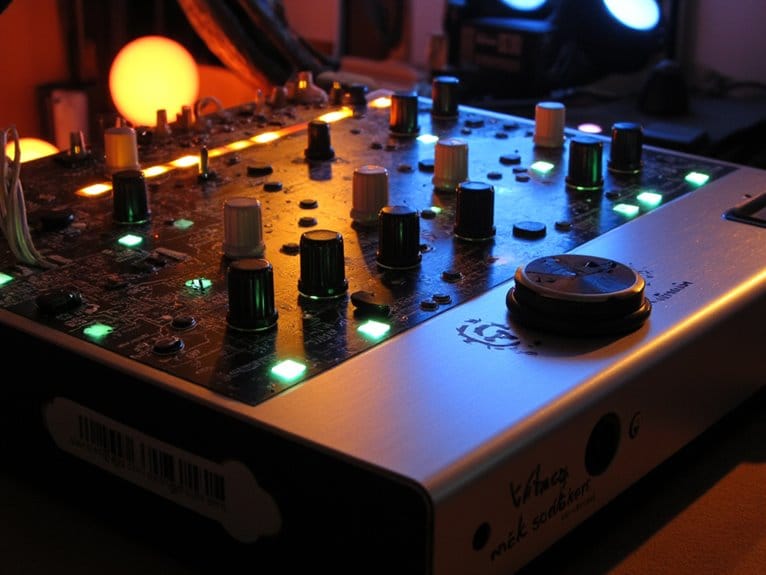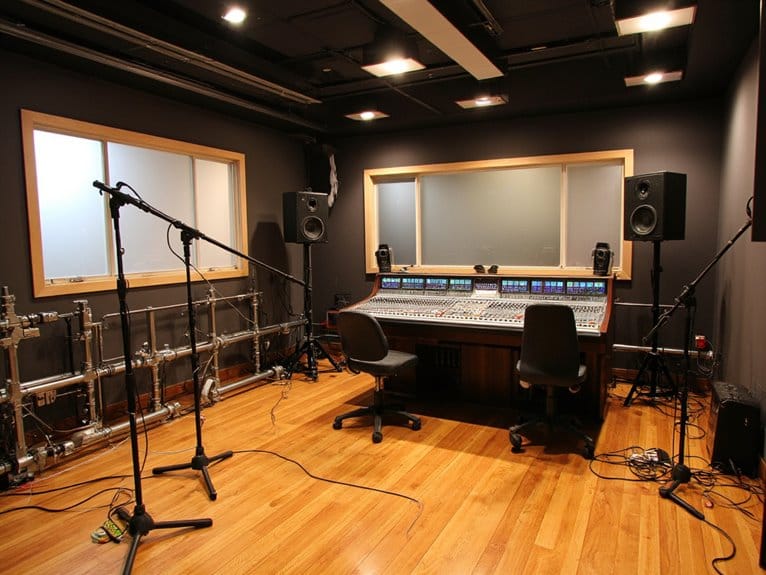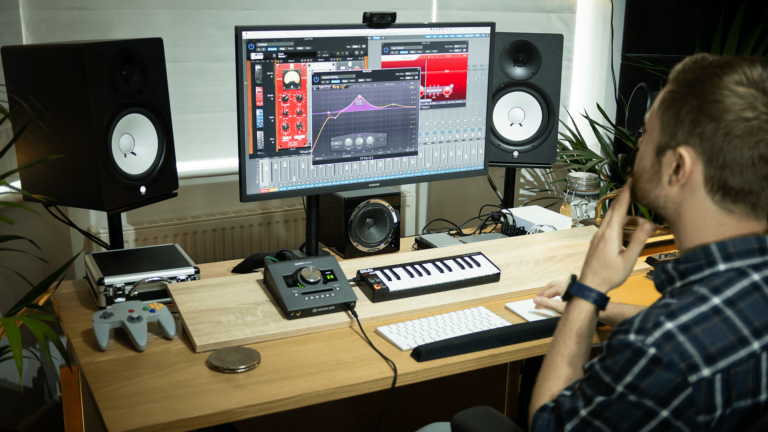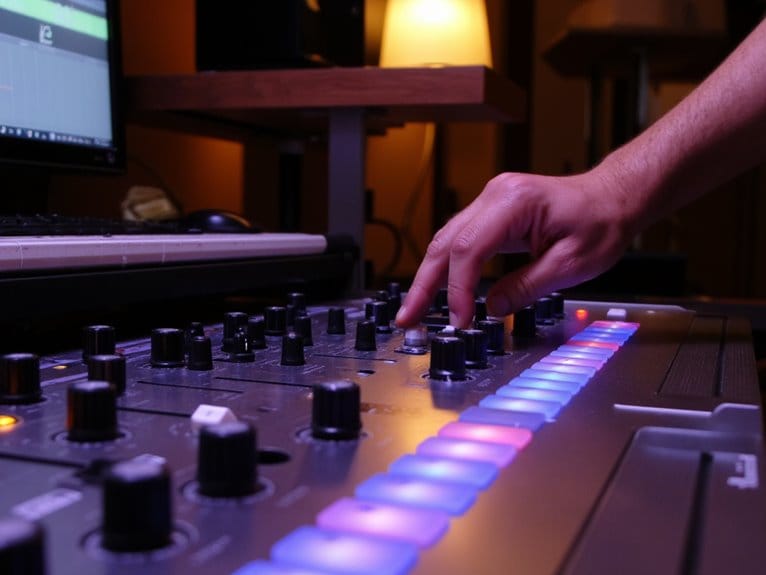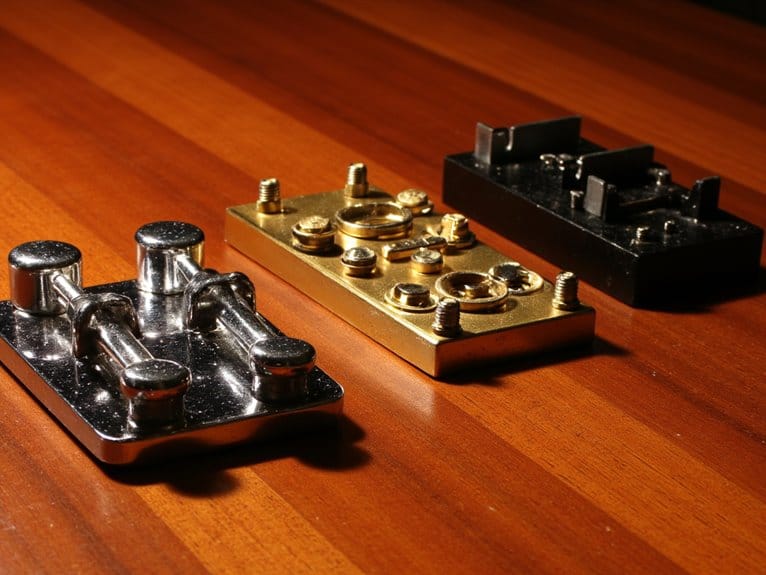Choosing the Perfect Drum Throne for Long Sessions
For marathon drumming sessions, you’ll want a throne with memory foam padding that reduces pressure points, height adjustability between 17-28 inches for proper knee and hip positioning, and a saddle or split seat design that promotes better circulation and spinal alignment. Look for heavy-duty steel construction with double-braced legs, slip-proof locking mechanisms, and durable vinyl covers that resist wear from constant movement, while matching the seat style to your specific playing technique and genre requirements for ideal endurance and performance consistency.
We are supported by our audience. When you purchase through links on our site, we may earn an affiliate commission, at no extra cost for you. Learn more.
Notable Insights
- Choose saddle or split seats over round seats for superior ergonomic support and reduced tailbone pressure during extended playing.
- Prioritize memory foam padding and high-density materials that maintain shape and comfort throughout long practice sessions.
- Ensure height adjustability ranges from 17″ to 28″ with slip-proof locking mechanisms for optimal knee and hip positioning.
- Select thrones with heavy-duty steel construction and double-braced bases to prevent wobbling during intense playing sequences.
- Match seat type to your playing style: motorcycle-style for double bass work, round for maximum rotation in jazz.
Understanding Ergonomic Benefits for Drummer Health
When I first started playing drums seriously, I didn’t realize how much my cheap, wobbly throne was sabotaging my performance until I experienced the transformative difference an ergonomic design can make.
Your throne’s ergonomic features directly impact your health through improved spinal alignment, proper weight distribution, and enhanced posture awareness that prevents you from developing those nagging aches that plague so many drummers.
Memory foam padding conforms to your body’s curves, reducing pressure points that cause circulation problems during extended sessions, while height adjustability guarantees your knees and hips maintain ideal positioning for blood flow.
A stable throne prevents unwanted body shifts during complex footwork sequences, ensuring your timing remains consistent even during the most demanding fills and polyrhythmic passages.
Quality thrones enhance your confidence levels by providing the reliable foundation you need to focus entirely on your playing rather than compensating for inadequate seating.
Features like thigh cutouts and motorcycle-style vinyl tops work together to minimize pressure distribution issues that can develop during marathon practice sessions.
This extensive approach to injury prevention isn’t just about comfort-it’s about protecting your long-term ability to play at your best.
Comparing Seat Types and Their Comfort Features
After years of testing different throne designs, I’ve discovered that your seat type fundamentally determines not just comfort, but your entire playing experience. Each configuration offers distinct advantages that cater to specific drumming styles and physical needs.
Understanding how different seat shapes affect your performance helps you make informed decisions about long-term comfort and playing endurance. The padding materials you choose will directly impact fatigue levels during extended sessions. Height adjustment capabilities are crucial for accommodating different drummer sizes and maintaining proper posture. Just like musicians need the right frequency response for their instruments, drummers require seats that support their body’s natural mechanics during performance. Quality throne accessories complement your electronic drum setup just as essential components like cymbals and throne complete a comprehensive practice environment.
Your throne’s seat shape directly influences playing comfort and endurance, while padding quality determines how long you can practice without fatigue.
- Round seats provide basic comfort with simple cushioned designs, ideal for beginners or shorter playing sessions.
- Saddle seats offer superior ergonomic support and stability, particularly beneficial for complex footwork and dynamic playing styles.
- Split seats reduce tailbone pressure while promoting ventilation, making them perfect for marathon practice sessions despite higher costs.
Essential Adjustable Features for Optimal Performance
While seat comfort forms the foundation of your drumming experience, the adjustability features built into your throne determine whether that comfort translates into sustained performance over hours of playing.
Height adjustability remains the most critical feature, with quality thrones offering 17″ to 28″ ranges through stepless mechanisms that accommodate everyone from compact jazz players to towering metal drummers.
I’ve found that swivel functionality transforms your mobility behind the kit, allowing natural torso rotation without fighting your seat’s position.
Look for solid 0.9-inch swivel rods that won’t wobble after months of use, combined with slip-proof locking mechanisms that maintain your precise height settings during aggressive playing.
These adjustable elements work together, creating the ergonomic foundation that separates weekend warriors from serious players.
Material Quality and Construction Considerations
Beyond all the ergonomic adjustments and comfort features, the materials and construction methods used in your drum throne determine whether you’ll still be sitting on a reliable seat after years of aggressive playing sessions.
Frame stability starts with heavy-duty steel construction, where double-braced or tripod bases provide the foundation that won’t wobble during intense performances. Quality welds and joints separate professional-grade thrones from budget options that’ll leave you disappointed.
For seat durability, you’ll want high-density foam that maintains its shape over time, paired with vinyl or leather covers that resist cracking under constant movement and pressure.
- Threaded shafts with grooves prevent unwanted height adjustments during play
- Multi-layer foam construction distributes weight evenly for extended comfort
- Rubber feet maintain position and protect your floor surfaces
Matching Throne Selection to Your Playing Style
Different playing styles demand completely different throne characteristics, and I’ve learned through years of watching drummers struggle with mismatched seats that your genre and technique should drive your selection more than price or brand loyalty.
Rock and metal drummers need adjustable thrones with precise height control and tilt modifications for ideal kick response during intense footwork, while jazz players benefit from round seats that allow maximum torso rotation and smooth dynamic movement.
If you’re into double bass work or have a heavier build, motorcycle-style seats provide the stability and ergonomic support you’ll need.
Studio musicians should prioritize memory locks and comfort features for those marathon recording sessions where throne compatibility directly impacts your performance consistency and endurance.
Frequently Asked Questions
How Often Should I Replace My Drum Throne for Optimal Health Benefits?
You should replace your drum throne every 1-3 years depending on usage frequency. Prioritize ergonomic design over extending drum throne lifespan – listen to your body’s signals like discomfort or pain rather than following rigid timelines.
Can Using a Drum Throne Help With Existing Back Injuries or Conditions?
Yes, you’ll find that drum thrones with ergonomic design and proper back support can help alleviate existing back injuries by promoting spinal alignment, reducing pressure points, and distributing weight evenly during playing sessions.
What’s the Ideal Break Frequency During Marathon Drumming Sessions?
You should take 5-10 minute breaks every 45-60 minutes during marathon sessions. Use hydration breaks to drink water and incorporate muscle relaxation through gentle stretching of your wrists, shoulders, and back.
On a final note
You’ve now got the essential knowledge to select a drum throne that’ll keep you comfortable through those marathon practice sessions and lengthy gigs. Remember, investing in proper ergonomics isn’t just about comfort-it’s about protecting your long-term health and maintaining consistent performance quality. Don’t rush this decision; your back, posture, and playing endurance will thank you for choosing wisely when you’re deep into hour four of that recording session.


